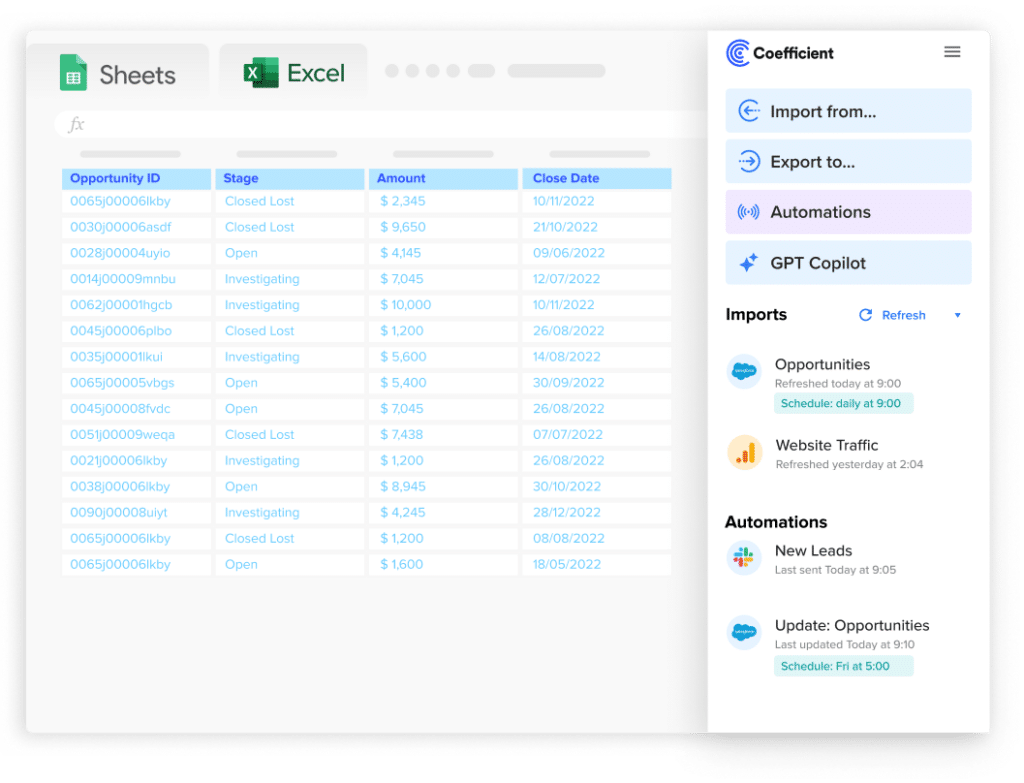Sales forecasting helps companies make better decisions about hiring, budgets, and growth strategies. But without tracking the right metrics, even the most sophisticated forecasts can miss the mark. Let’s examine the nine most important metrics for accurate sales forecasts and how to track them effectively.
1. Quota
Sales quotas are specific revenue or unit targets assigned to sales reps or teams for a defined period. According to SalesForce research, organizations that set data-backed quotas see 25% higher attainment rates.
Setting Realistic Quotas:
- Base quotas on territory potential using market size data
- Account for seasonal variations and market trends
- Consider rep experience and historical performance
- Factor in company growth targets and market share goals
Impact on Forecasting:
- Well-calibrated quotas serve as forecast benchmarks
- Quota achievement patterns help predict future performance
- Research by Gartner shows that organizations with data-driven quota setting improve forecast accuracy by 32%
2. Attainment
Attainment measures actual sales performance against quota targets. HubSpot’s State of Sales report indicates that top performers track attainment weekly or even daily.
Effective Measurement:
- Calculate both team and individual attainment percentages
- Track attainment velocity (speed of quota achievement)
- Monitor attainment patterns across different products/services
- Compare attainment across territories and market segments
Forecasting Applications:
- Use attainment trends to adjust future quotas
- Identify seasonal patterns in attainment rates
- Create performance-based forecast models
- According to Miller Heiman Group, companies that analyze attainment patterns improve forecast accuracy by 28%
3. Pipeline Coverage
Pipeline coverage ratio indicates whether you have enough opportunities to meet targets. SiriusDecisions research shows optimal coverage varies by industry and sales cycle length.
Understanding Coverage Ratios:
- Basic ratio = Pipeline value ÷ Target revenue
- Weighted ratio = Probability-adjusted pipeline value ÷ Target
- Stage-based coverage = Pipeline value by sales stage
Optimal Ratios:
- Early-stage opportunities: 5-6x coverage
- Mid-stage opportunities: 4x coverage
- Late-stage opportunities: 3x coverage
- Research by Sales Benchmark Index indicates these ratios yield 85%+ forecast accuracy
4. Historical Conversions
Past performance data provides crucial forecast inputs. Aberdeen Group reports that companies using historical conversion analysis improve forecast accuracy by 32%.
Key Conversion Metrics:
- Stage-to-stage conversion rates
- Time-in-stage averages
- Win rates by deal size
- Lead source conversion rates
Analysis Best Practices:
- Segment data by product line, territory, and rep
- Account for seasonality and market conditions
- Use rolling averages to smooth variations
- Track conversion trend changes
5. Activity Data
Sales activities predict outcomes. Forrester research shows that companies tracking detailed activity metrics improve forecast accuracy by 26%.
Critical Activities to Track:
- Customer meetings and presentations
- Proposal submissions
- Technical demonstrations
- Contract negotiations
- Follow-up communications
Activity Impact Analysis:
- Calculate activity-to-outcome ratios
- Monitor activity sequence patterns
- Track timing between key activities
- Measure activity quality metrics
6. CRM Score
CRM scoring evaluates opportunity quality using multiple weighted factors. According to CSO Insights, companies using sophisticated scoring systems achieve 87% forecast accuracy.
Scoring Components:

Stop exporting data manually. Sync data from your business systems into Google Sheets or Excel with Coefficient and set it on a refresh schedule.
Get Started
- Budget verification (15-20%)
- Decision maker engagement (20-25%)
- Solution fit (15-20%)
- Competitive position (10-15%)
- Timeline certainty (15-20%)
- Technical validation (10-15%)
Implementation Steps:
- Define scoring criteria
- Assign factor weights
- Establish scoring processes
- Train teams on scoring
- Regular score calibration
7. Sales Linearity
Sales linearity measures sales distribution across time periods. Boston Consulting Group research shows companies with linear sales patterns achieve 12% higher revenue growth.
Measuring Linearity:
- Daily/weekly close distributions
- Pipeline progression rates
- Activity spread analysis
- Stage advancement timing
Improving Linearity:
- Balance activity scheduling
- Implement consistent review cadence
- Create early-period incentives
- Monitor deal advancement timing
8. Deal Slippage
Deal slippage tracks forecast date changes. Miller Heiman Group reports average B2B deal slippage of 24 days.
Common Causes:
- Budget timing changes
- Stakeholder turnover
- Technical requirements shifts
- Competitive situations
- Internal approval delays
Tracking Methods:
- Original vs. current close dates
- Slippage frequency by stage
- Impact on forecast periods
- Root cause analysis
9. Next Quarter Pipeline
Building future pipeline visibility requires systematic approach. SalesForce research indicates companies with strong pipeline building processes achieve 28% higher growth rates.
Key Components:
- Lead generation metrics
- Market penetration analysis
- Account expansion potential
- Competitive displacement opportunities
Early Indicators:
- Marketing qualified leads
- Website engagement metrics
- Product usage patterns
- Customer expansion signals
- Market trend alignment
Monitor These Metrics in Real Time with Coefficient
Accurate sales forecasting depends on tracking the right metrics consistently. Start implementing these nine metrics today using Coefficient’s automated data integration features. Get started now to improve your forecast accuracy.

